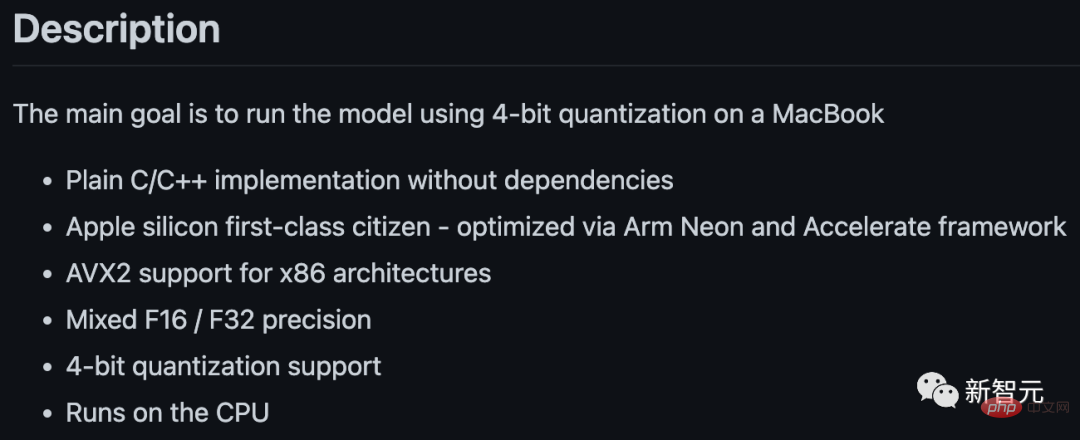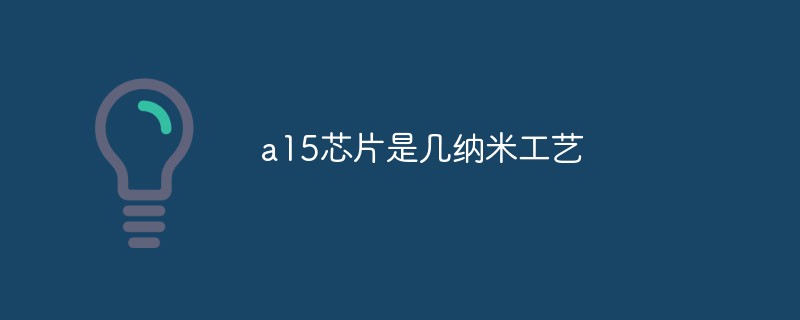 Common Problem
Common Problem If a certain memory chip has 24 address lines, what is the capacity of the memory stick?
If a certain memory chip has 24 address lines, what is the capacity of the memory stick?The address lines of a certain memory chip are 24, so the capacity of the memory stick is 16M; the memory capacity is generally a multiple of 2, such as 64MB, 128MB, 256MB, etc. Generally speaking, The larger the memory capacity, the better it is for the operation of the system.

#The operating environment of this article: Windows 7 system, Dell G3.
The address lines of a certain memory chip are 24, what is the capacity of the memory stick?
2 to the 24th power is 16M, but the data bit width Not sure, if the byte width is 16MB, if the byte width is 32bit, it is 64MB.
30 address encoding lines can encode 2^30 storage units.
32 data lines, indicating that the storage word length of each storage unit is 32 bits.
Then storage capacity=2^30*32=2^35bit(bit)=2^32B=2^22KB=2^12MB=2^2GB=4GB
Extended information:
The memory capacity is generally a multiple of 2, such as 64MB, 128MB, 256MB, etc. Generally speaking, the larger the memory capacity, the better it is for the operation of the system. In the early 21st century, the mainstream memory capacity used in desktop computers is 2GB or 4GB, and 512MB and 256MB memory are rarely used.
The system recognizes memory in Byte (byte) as the unit. Each byte is composed of 8-bit binary numbers, that is, 8bit (bit, also called "bit"). According to the computer's binary format, 1Byte=8bit; 1KB=1024Byte; 1MB=1024KB; 1GB=1024MB; 1TB=1024GB.
For more related knowledge, please visit the FAQ column!
The above is the detailed content of If a certain memory chip has 24 address lines, what is the capacity of the memory stick?. For more information, please follow other related articles on the PHP Chinese website!
 苹果13芯片是什么型号Dec 13, 2022 am 11:25 AM
苹果13芯片是什么型号Dec 13, 2022 am 11:25 AM苹果13搭载了A15仿生芯片。A15芯片采用台积电5nm制程工艺,集成150亿个晶体管,较A14的晶体管数量提升了27%,单核性能提升为8%,多核性能提升逾15%;该芯片采用2个性能核心+4个能效核心组成的6核心设计,另外有4核心图形处理器和16核神经网络引擎。
 台积电全称叫什么Oct 27, 2022 pm 04:37 PM
台积电全称叫什么Oct 27, 2022 pm 04:37 PM台积电全称叫“台湾积体电路制造股份有限公司”,属于半导体制造公司,成立于1987年,是全球第一家专业积体电路制造服务(晶圆代工foundry)企业;该公司经营的是集成电路制造,为客户生产的晶片涵盖电脑产品、通讯产品、消费性、工业用及标准类半导体等众多电子产品应用领域。
 esp32芯片是什么Mar 10, 2023 pm 04:08 PM
esp32芯片是什么Mar 10, 2023 pm 04:08 PMesp32芯片是Espressif乐鑫信息科技推出的一块WiFi芯片,拥有40nm工艺、双核32位MCU、2.4GHz双模WiFi和蓝牙芯片、主频高达230MHz。ESP32芯片采用Tensilica Xtensa LX6微处理器,包括双核心和单核版本,内置天线开关,RF射频模块,功率放大器,低噪声接收放大器,滤波器和电源管理模块。
 模拟芯片是什么意思Nov 01, 2022 pm 03:38 PM
模拟芯片是什么意思Nov 01, 2022 pm 03:38 PM模拟芯片是集成的模拟电路,主要由电阻,电容,晶体管等组成,用于处理连续函数形式的模拟信号。模拟芯片包括电源管理芯片负起对电能的变换,分配,检测等职责;模拟芯片与元器件的关系紧密,设计需要考虑元器件布局的结构和参数匹配的形式。
 cpu和芯片是同一个概念吗Sep 12, 2020 am 09:43 AM
cpu和芯片是同一个概念吗Sep 12, 2020 am 09:43 AMcpu和芯片不是同一个概念,两者区别是:1、功能不同,电脑中所有操作都由CPU负责读取指令,而芯片是提供对CPU的类型和主频等支持;2、构成不同,cpu是各电子元件构成的计算机中央处理器的统称;3、定义不同;4、制作组成不同;5、外观不同。
 苹果13芯片是多少纳米Dec 09, 2022 pm 03:00 PM
苹果13芯片是多少纳米Dec 09, 2022 pm 03:00 PM苹果13芯片是5纳米。苹果13的处理器为A15仿生芯片,这颗芯片基于5纳米设计,由台积电代工,集成150亿个晶体管,采用全新6核心设计(2大核+4小核)并拥有4核GPU+16核神经引擎。A15仿生的CPU拥有50%的性能提升,图形性能则拥有30%的性能提升,配合16核心的神经网络引擎,也能实现机器的学习能力。
 LeCun转赞:在苹果M1/M2芯片上跑LLaMA!130亿参数模型仅需4GB内存Apr 11, 2023 pm 07:27 PM
LeCun转赞:在苹果M1/M2芯片上跑LLaMA!130亿参数模型仅需4GB内存Apr 11, 2023 pm 07:27 PM前不久,Meta前脚发布完开源大语言模型LLaMA,后脚就被网友放出了无门槛下载链接,「惨遭」开放。消息一出,圈内瞬间就热闹了起来,大家纷纷开始下载测试。但那些手头没有顶级显卡的朋友们,就只能望模型兴叹了。不过,问题不大。Georgi Gerganov在最近做了一个名为「llama.cpp」的项目——没有GPU也能跑LLaMA。项目地址:https://github.com/ggerganov/llama.cpp是的,这也包括搭载了苹果芯片的Mac。并且还获得了LeCun的转发支持。在M1/M2
 a15芯片是几纳米工艺Nov 28, 2022 pm 05:32 PM
a15芯片是几纳米工艺Nov 28, 2022 pm 05:32 PMa15芯片是5纳米工艺。A15仿生芯片是由苹果公司推出的一款采用5纳米工艺制程的移动端芯片;A15仿生芯片集成了150亿个晶体管,内置6核心强大的CPU,整体性能提升50%,同时还有4核心GPU,性能提升30%,以及16核心的神经网络引擎,支持最高每秒15.8万亿次运算能力。

Hot AI Tools

Undresser.AI Undress
AI-powered app for creating realistic nude photos

AI Clothes Remover
Online AI tool for removing clothes from photos.

Undress AI Tool
Undress images for free

Clothoff.io
AI clothes remover

AI Hentai Generator
Generate AI Hentai for free.

Hot Article

Hot Tools

SAP NetWeaver Server Adapter for Eclipse
Integrate Eclipse with SAP NetWeaver application server.

Dreamweaver Mac version
Visual web development tools

ZendStudio 13.5.1 Mac
Powerful PHP integrated development environment

Atom editor mac version download
The most popular open source editor

SublimeText3 Linux new version
SublimeText3 Linux latest version





